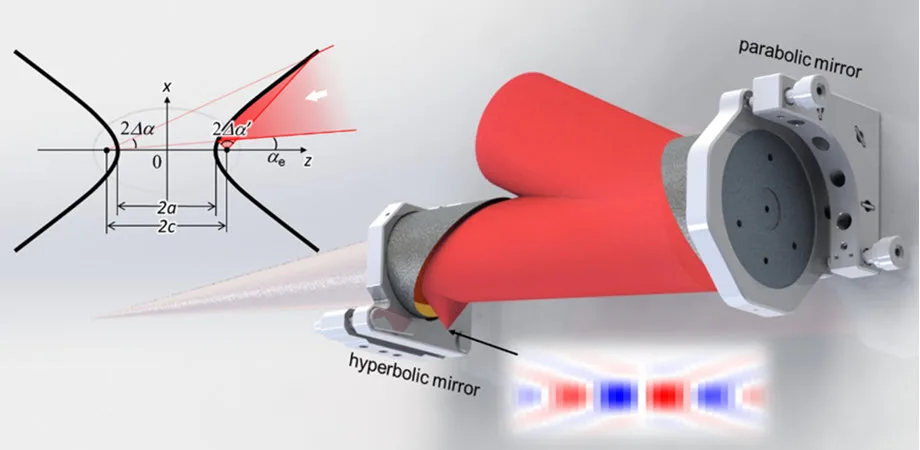A new mirror design could revolutionize the focus of ultra-intense ultrashort lasers, enhancing their use in fields like physics, national security, and healthcare. The design, developed by Zhaoyang Li and his team at the Shanghai Institute of Optics and Fine Mechanics, involves adding a rotational hyperbolic mirror after the parabolic one, reducing the focal spot size of the laser to a single-wavelength size. This could significantly improve the experimental capability of ultra-intense ultrashort lasers, particularly in the application of strong-field laser physics.
The Power of Ultra-Intense Ultrashort Lasers
Ultra-intense ultrashort lasers are potent tools utilized in a variety of sectors, including physics, national security, industry, and healthcare. They provide researchers with the means to explore strong-field laser physics, laser-driven radiation sources, particle acceleration, and more. The intensity of these lasers, often referred to as “peak power,” is a critical factor in their effectiveness. For instance, the Nova laser at the Lawrence Livermore National Laboratory in California boasts 1.5 petawatts of peak power, while the Shanghai Super-intense Ultrafast Laser Facility (SULF) in China and the Extreme Light Infrastructure – Nuclear Physics (ELI-NP) in Romania each have a peak power of 10 petawatts. However, the focused intensity on the target, not the peak power, is what truly matters in experiments. This focused intensity is achieved using off-axis parabolic mirrors and is a crucial determinant of the laser’s capability.
Enhancing Laser Focus with Hyperbolic Mirrors
The beam aperture of these lasers currently ranges from 150 to 500 mm, and the F-number (a measure of focusing ability) is between 2 and 10. A new method involving the addition of a rotational hyperbolic mirror after the parabolic one can significantly reduce the F-number and, consequently, the focal spot size. As reported in Advanced Photonics Nexus, this secondary focusing method can reduce the F-number by a factor of 5, which then reduces the focal spot size of the ultra-intense ultrashort laser to a single-wavelength size.
Achieving the Smallest Possible Focal Spot
Zhaoyang Li, the corresponding author from the Key Laboratory of Ultra-intense Laser Science and Technology at the Shanghai Institute of Optics and Fine Mechanics in China, explains that this technique enables the smallest possible focal spot. By using hyperbolic mirrors for secondary focusing, the focal spot of ultra-intense ultrashort lasers can be reduced from a several-wavelength size to just a single-wavelength size. Li and his team report that single-wavelength focal spots can be achieved by adding an optimized rotational hyperbolic mirror to current femtosecond petawatt-class lasers or future single-cycle petawatt-class lasers.
Reaching the Highest Intensity Condition
Combined with the previously proposed Wide-angle Non-collinear Optical Parametric Chirped Pulse Amplification (WNOPCPA) method, it is expected to reach the highest intensity condition of an ultra-intense ultrashort laser facility. This means focusing all laser energy into a spatiotemporal focal cube edged by the laser center wavelength. According to Li, this will significantly enhance the experimental capability of ultra-intense ultrashort lasers in the application of strong-field laser physics, such as vacuum quantum electrodynamics.
The Future of Ultra-Intense Ultrashort Lasers
The innovative mirror design and the use of hyperbolic mirrors for secondary focusing represent a significant advancement in strong-field laser physics. By reducing the focal spot to a single-wavelength size, researchers can achieve the highest intensity condition for ultra-intense ultrashort lasers. This breakthrough has the potential to dramatically enhance the experimental capability of these lasers, opening up new possibilities in various fields, including physics, national security, industry, and healthcare. As the technology continues to evolve, the impact of ultra-intense ultrashort lasers is expected to grow, further expanding our understanding of strong-field laser physics and its applications.
External Link: Click Here For More

